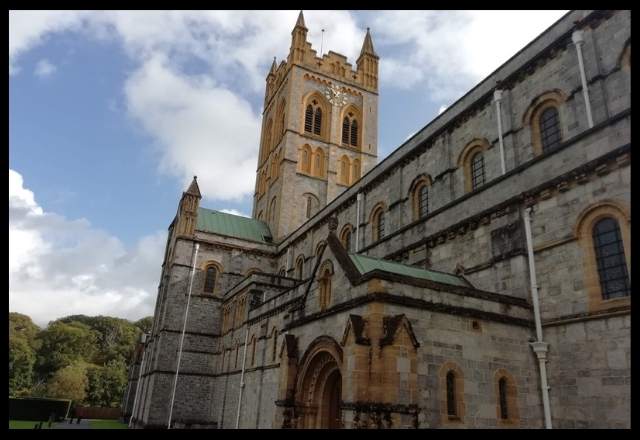As many organists will no doubt be aware, Buckfast Abbey in Devon has recently benefited from the installation of a remarkable new pipe organ by Fratelli Ruffatti. This dramatic new instrument sports two beautiful consoles and a gallery organ, the whole thing playable from either end of the church. As part of the completion of the tonal scheme, Viscount was asked to provide a 32-foot flue stop using digital technology.
Using our custom built loudspeakers
Following an exciting site visit that involved exploring the parts of the organ installed in the triforium (mainly the solo division), it was decided that here was the best place to put the loudspeakers needed for the new Contra Bourdon stop. Returning to the Abbey with our kit we were welcomed warmly by organist David Davies who made sure we had everything we needed to get on with the job.
Located in the solo box was an interface module from the main organ system (the Orgdrive boxes shown in the picture below), that had enabled Ruffatti to give us switch closure outputs for the pedal notes of the stop in question. Our custom interface box mounted above converted these into MIDI note data that could be used to control our physical modelling pipe emulation system installed near to the loudspeakers.
Control logic was designed so that when the main organ powered up, our sound generator and amplifier were turned on with suitable delays, and the correct 32-foot stop enabled.
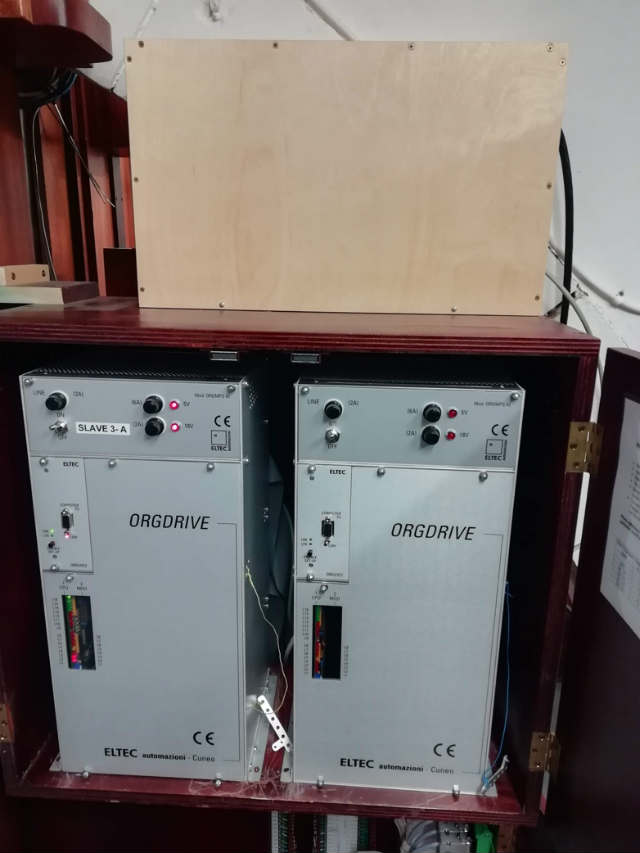
Custom-built bass loudspeakers, used successfully in a few other installations, were used to generate the extended low frequency response needed for a 32-foot stop. As many will know, the bottom C of such a stop has a fundamental frequency of 16 Hz, and you need to move quite a lot of air down there! In order to enable a reasonably effortless performance, eight drivers were employed in four cabinets, driven by a multi-channel power amplifier.
Voicing of the organ begins
Once the whole setup had been proven, detailed regulation and voicing could begin. Thankfully the editing software for the pipe emulation module enabled individual notes to be triggered from the computer, otherwise it really would have involved a lot of running backwards and forwards along the triforium to the gallery console. This made it possible to do some basic voicing and regulation in situ, mainly in order to tame some prominent resonances and bring up some quiet notes.
Down to the gallery console then, a few times, to check things out and we began to enjoy a beautiful rolling sub-bass beneath quiet swell strings—just the thing for improvisation before an evening service, or for a psalm accompaniment. The relatively high level of reverberation in the church meant a fairly diffuse sound field in which the bass level didn’t change too much as one moved around the church. Down by the choir console, however, one was definitely closer to the sub-bass loudspeakers and minor adjustments to regulation were needed to balance up the experience for organist and congregation in different parts of the church.
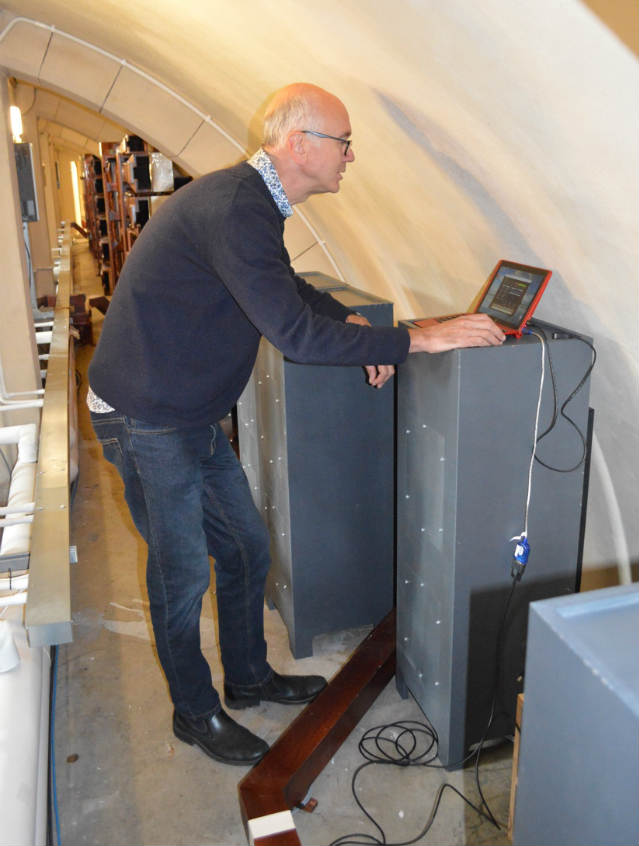
All that remained was to check the power up sequence of our equipment a few more times, to ensure that everything came up as expected, and that the organ stop in question did its job reliably. We left the beautiful setting of Buckfast on a stormy evening happy that the monks, musicians and congregation would now be able to enjoy the sumptuous warmth of the 32-foot experience.
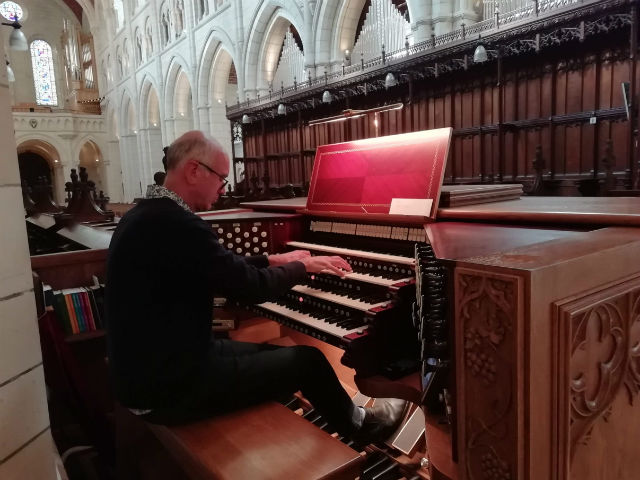
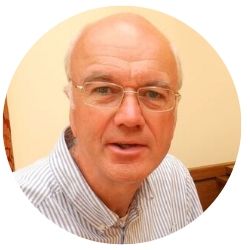
I’m a retired academic, with a background in music and audio engineering. I’m currently a consultant for Viscount & Regent Classic Organs, as well as being a freelance organist, including a role as organist/choirmaster at St Mary’s, Witney. I sing bass with Oxford Pro Musica Singers and the Cathedral Singers of Christ Church, Oxford.
